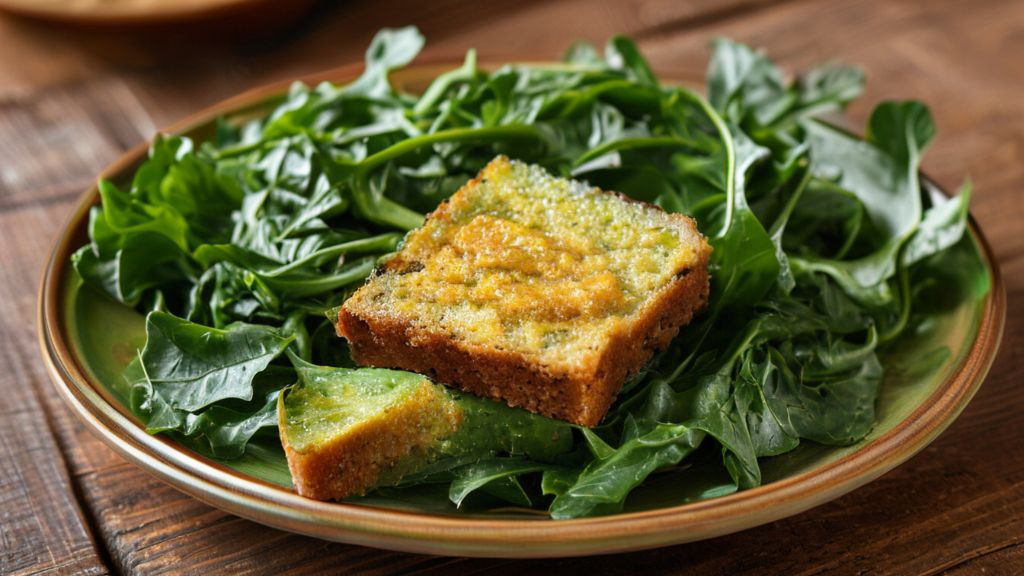The Fickle Feast: Why Meal Kits Struggle to Keep Us Coming Back for Seconds
What is meal kits?
Meal Kits are a great way to improve your skills online. The characteristics of meal kits is helpful.
The Fickle Feast: Why Meal Kits Struggle to Keep Us Coming Back for Seconds
Meal kits have become a fascinating topic in the culinary world, reflecting our evolving habits around food. We’ve seen innovations from instant meals to gourmet frozen dinners, all promising to make our lives easier and tastier. But then, remember the meal kit craze? It felt like suddenly, everyone was getting those beautifully packaged boxes delivered to their door, ready to transform weeknight dinners.
Through meal kits is helpful.
Main features of meal kits
What is important in meal kits is helpful.
1. Remember When Meal Kits Were the Next Big Thing? What Happened?

It feels like just yesterday, meal kits were poised to revolutionize how we eat at home, promising to disrupt traditional grocery stores and inject a little more joy into cooking. And honestly, they exploded onto the scene! A decade ago, there were just a handful of these companies, around 13, but by 2022, that number had skyrocketed to a staggering 382 in the US – that’s a 300% increase! It really seemed like they were everywhere, infiltrating our social media feeds and promising a world of culinary convenience.
The core of meal kits is helpful.
But here’s the surprising truth, the elephant in the room that often gets overlooked: despite all that impressive industry-wide growth, meal kits face a significant hurdle, and ironically, that hurdle is you. From my experience, human behavior, especially when it comes to something as personal as food and beverages, can be incredibly fickle. What’s truly eye-opening is that among all the folks who tried one of the five major meal delivery services in 2022, about 90% ended up canceling their subscriptions by the end of the year. That’s a huge drop-off, and it really makes you wonder what’s going on behind the scenes. This high cancellation rate highlights that while getting customers in the door isn’t the problem, keeping them engaged is the real challenge. It’s a vivid reminder that even the most innovative business models can struggle against the unpredictable currents of consumer habits.
For effective use of meal kits is helpful.
This leads us to the unfortunate reality for some early pioneers, like Blue Apron, which was one of the first big names in the game. They’re now in the process of being sold, a stark indicator of just how tough this market can be, despite its initial promise and rapid expansion. It’s a classic case of rapid growth meeting the reality of consumer retention challenges.
2. Is It Really Cheaper? Unpacking the Price Puzzle of Meal Kits

When meal kit companies first burst onto the scene, one of their main selling points was the price per meal. You’d see advertisements everywhere touting how you could make “fancy meals for under $5” or get dishes for “1.49 per meal.” And honestly, it sounded incredibly appealing! HelloFresh and Home Chef, two of the big players, even claimed it was actually cheaper to buy their meal kits than to just go to the grocery store. They saw traditional offline grocers as their biggest competitors, believing that anyone sourcing ingredients to cook at home was their target audience.
But what makes those claims possible? Well, it largely boils down to economies of scale. You see, the bigger the company, the more volume they handle, which gives them a significant advantage in sourcing ingredients at lower prices. Brian Choi, a veteran in food and beverage market research, points out that while grocery stores generally have an edge because of their sheer daily volume, the biggest meal kit companies, like HelloFresh, are best positioned to compete on price due to their own massive scale. HelloFresh, for instance, mentioned that economies of scale allow them to secure better pricing and margins, which they can then reinvest into a better customer experience or, crucially, into lower prices for you.
However, here’s the counterintuitive insight: while meal kit companies can sometimes compete with grocers on price, particularly if they’re a large player, buying ingredients yourself from a grocery store still tends to be cheaper on a per-meal basis. Think about it: you have the flexibility to buy fewer ingredients if a recipe calls for a tiny bit of something, or you can opt for cheaper alternatives if you’re on a budget. With meal kits, you’re locked into a minimum weekly spend, like the $60.95 minimum for HelloFresh and Blue Apron, which works out to about $12.49 per meal—and that’s before any discounts kick in. It’s tough to get people over that initial purchase barrier. This is why incentives are a massive part of their marketing playbook. But, as they’ve found, it takes about six months to recoup the dollar they spend on acquiring a new customer. This dynamic highlights the delicate balance between attracting new customers with appealing prices and ensuring long-term financial viability.
4. Beyond the Box: Can Convenience and Variety Keep Us Cooking?
Beyond just price, meal kit companies are desperately trying to boost retention by leaning heavily into two other pillars: convenience and variety. The biggest value proposition they offer is, without a doubt, convenience. Imagine: pre-portioned ingredients, relatively simple recipes, all shipped right to your door. It sounds like a dream for anyone who dreads meal planning or grocery shopping, and for a while, it truly felt like a unique solution.
However, here’s the rub: the unique value proposition of meal kits has actually diminished significantly when you compare it to all the other options available to consumers today. Think about it: both restaurants and grocery stores now offer seamless delivery services right to your doorstep. Why commit to a box of ingredients when you can get a fully prepared meal or all your groceries delivered with just a few taps on your phone? Plus, while meal kits are great if you want to cook, the reality is that Americans only cook an average of 4.5 meals at home per week. That’s not a lot of opportunity to make the most of a weekly subscription.
To combat this, companies across the industry are rapidly expanding their offerings. And what’s interesting is that one of the most common additions isn’t a meal kit at all – it’s pre-made meals. You see ads for services like Factor, where chefs cook meals for you and deliver them fresh, or others that offer oven-ready meals or “fast and fresh” options ready in 15 minutes. The idea is that by growing their customer base and diversifying their assortment, they can give customers a lot more choice. More choice theoretically means you’re more likely to spend more with the company. But it’s still an open question how much these new offerings will truly move the needle on those elusive customer retention rates across the industry, as the core challenge of balancing value and convenience against a myriad of other options persists.
5. The Survival of the Fittest: What Does It Take to Thrive in the Meal Kit Jungle?
When we look back at the early days of the meal kit industry, it’s a fascinating study in divergent paths. Consider Blue Apron and HelloFresh, two of the earliest big players; both got off the ground by raising hundreds of millions of dollars in funding and went public in 2017. At first glance, you might think their journeys would be similar, especially since Blue Apron’s retention rates were even slightly above the rest, possibly due to more options and customization. However, their stories quickly split down dramatically different roads.
Blue Apron’s revenue has seen a significant decline since 2017, with only a slight bump during the pandemic, which was a boom for the entire industry. This struggle culminated in the New York Stock Exchange even threatening to delist Blue Apron after its stock dipped below a dollar. In response, the company shifted to an “asset-light” model, scaling down operations and offloading many to another company, ultimately announcing its sale to Wonder Group to return to being a private entity. This shows just how brutal the market can be for companies that struggle with consistent profitability and growth.
HelloFresh, on the other hand, presents a remarkable contrast. They have been consistently profitable since 2017, showing continuous growth even after the pandemic shutdowns ended and people could dine out again. The insightful takeaway here is that once a company establishes itself as the leader in a complex space like meal kits, it becomes incredibly difficult to disrupt them. They’ve solved a multitude of complex problems repeatedly to reach that dominant position. While both companies faced stark drops in share prices, HelloFresh’s ability to achieve and maintain profitability, while scaling effectively, ultimately positioned them for long-term success where others faltered. It highlights that in this competitive landscape, just attracting customers isn’t enough; sustainable profitability and operational excellence are the true keys to survival.
6. Niche or Bust: Is Specialization the Secret Sauce for Meal Kit Success?

One crucial step for survival in the crowded meal kit industry is differentiation. You see, the barriers to simply entering the meal kit industry are actually quite low, which explains why there are so many companies out there. But, as one expert put it, the barriers to scaling and building a big business are incredibly high. That means to truly survive and thrive, each company needs to find a way to stand out from the pack. Let’s look at Methodology as a fantastic example of this strategy. This small meal delivery company, which started in 2015, doesn’t even offer traditional meal kits. Instead, they send out four or five days’ worth of pre-made meals, and here’s the kicker: they use ingredients you’re far less likely to find in other kits, like nopales, cacti, and purslane. Their audience is very specific: “time-starved” individuals who don’t have time to cook healthy meals on weeknights, primarily those making “several hundred thousands, if not more.” This is a crucial distinction.
While most other companies compete in the $8 to $15 per serving range (before discounts), Methodology costs a premium, typically around $17 to $30 per meal. And here’s another counterintuitive move: they don’t offer discounts at nearly the same rate as the mainstream players; their average discount is just 10% off a customer’s first week. This specialized, high-price, low-discount model has allowed Methodology to be profitable from its second year. They target a very specific demographic, particularly “men who live on takeout,” who are already spending an average of $35 per meal multiple times a week. For these customers, Methodology isn’t just a meal service; it’s a lifestyle. This deep connection and willingness to pay premium prices, driven by a highly targeted niche, proves that specialization and a focus on unique value can lead to strong profitability and incredible customer loyalty, with some customers spending over a hundred thousand dollars with them.
7. What’s Cooking for the Future? Peeking into the Crystal Ball of the Meal Kit Industry
So, where is the meal kit industry headed? It’s a huge question, especially considering we’re operating in one of the largest consumer categories out there: food at home. This massive market will always attract new business models and entrants, which keeps things interesting. Grand View Research, for instance, forecasts that the revenue across the US meal kit industry could reach an astounding $64.27 billion by 2030. That’s a lot of potential growth! However, some experts, like Brian Choi, are a bit more cautious, suggesting those numbers might be “a little bit too optimistic.” From my perspective, predicting the exact future of the food industry in five or ten years is incredibly challenging, but it’s clear that meal kit companies still have a significant role to play in shaping it.
Looking ahead, I anticipate a period of significant consolidation. While the industry is robust, it’s highly likely that we’ll see only one or two major players truly dominating the space in about ten years. This means that many of the smaller, less differentiated companies will either go bankrupt or be acquired by these larger, more established players. The meal kit industry is constantly evolving, driven by consumer preferences for convenience, value, and variety. The companies that can master profitability, embrace true differentiation, and adapt to the ever-changing landscape of how we eat will be the ones that ultimately thrive and reshape the future of food at home. Learn more about the meal kit industry trends here.
Related information: View more meal kits related content
Reference: Google SEO Starter Guide
meal kits Frequently Asked Questions
How is meal kits used?
meal kits can be utilized in various ways and can be effectively used through proper understanding and practice.





